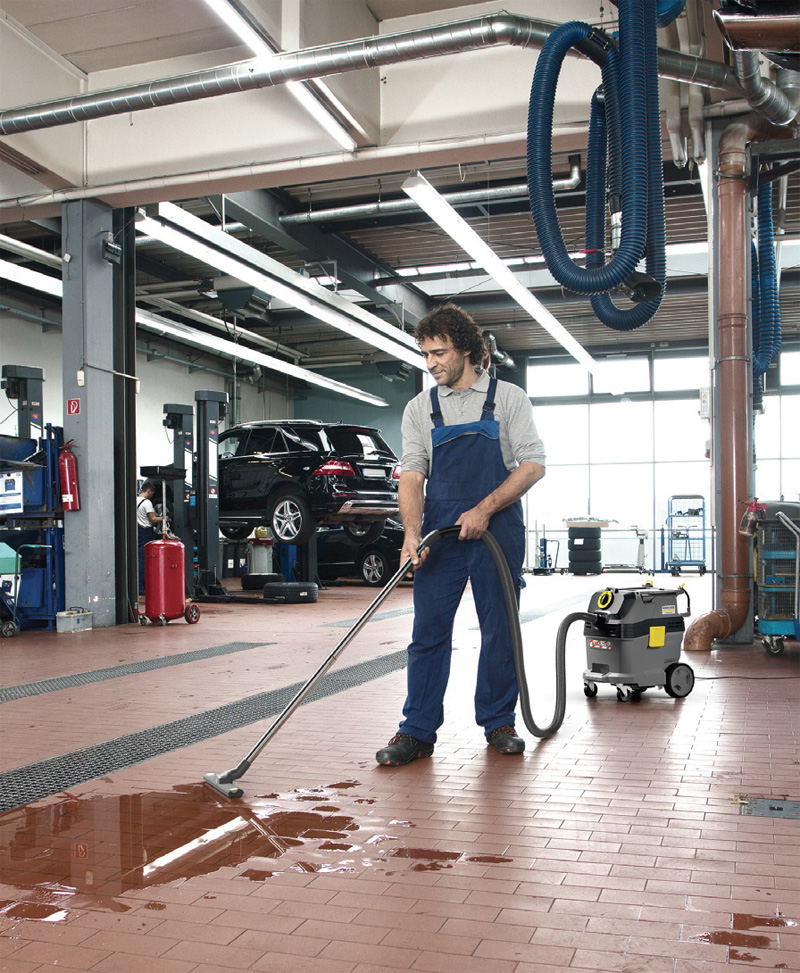
Daniel Hennessey, Key Account Manager for Automotive at Kärcher UK, discusses the best products and processes for keeping garages spick and span as we transition from winter to spring.
It is very easy to let the cleanliness standard of the workshop slip when it’s in use almost every day. Arguably, workshop cleanliness is increasingly important as the pandemic rolls on, not just due to the need to keep the virus at bay, but also to promote a business online. Customers are reliant on online reviews and information to make the decision on where to take their vehicles, so you need to be able to present an organised and efficient business.
A weekly cleaning routine is recommended, and floors in particular should be well-maintained to prevent accidents and protect the health of the workforce.
Machine technology is essential
Scrubber dryers are recommended as they are cost-effective and efficient. Don’t be put off by the assumption that your garage space is too small to accommodate this cleaning method. There are plenty of compact or ‘push’ scrubber dryers available. The Kärcher BR 40/10C, for example, has a working width of 400mm and a tank capacity of 10L, with no compromise on cleaning capability.
Cleaning agent is added to the fresh-water tank and fed ready-mixed to the scrubber head, where the brush system channels it towards the floor. The brushes then scrub the floor to remove the dirt. The squeegees behind the brushes recover the dirty water, collecting it in the dirty water tank. As well as being significantly more efficient than manual cleaning, a scrubber dryer leaves the floor dry, so it can be walked on immediately.
Depending on the flooring, the scrubber dryer should be fitted with a disc or a roller scrubbing head. Generally, roller systems suit structured floors commonly found in workshops. Roller brushes penetrate the surface of the floor more effectively, with higher contact pressure (seven times greater) and a higher rotational speed that thoroughly removes stubborn stains. The high rotational speed also means the brushes clean themselves by propelling dirt away. The hardness of the brush material will depend on the amount and type of dirt and the hardness of the floor surface.

Maintenance vs. deep cleaning
To tackle a heavily soiled floor that requires deep cleaning you should employ the two-step method. As a first step, the user applies a cleaning solution with a higher concentration (5-20%) to the flooring. While the solution is reacting with the dirt, the surface is scrubbed several times. In a second step, the loosened dirt is collected by the machine’s squeegee.
For light soiling, maintenance cleaning using the one-step method should be sufficient – the cleaning solution (0.5-3%) is applied to the floor, after which the surface is scrubbed and the loosened dirt is vacuumed as part of the same process.
Alternative cleaning methods
High-pressure cleaners can also be used to clean workshop floors and are often already present on-site. A surface cleaner is an essential accessory to contain the water and prevent fixtures and equipment from being covered in moisture. A nozzle bar with angled self-propelling power nozzles rotates in the round casing (which serves as a splash guard) dislodging the dirt from the ground.
This can be instantly diverted into the existing drain system or vacuumed using a wet/dry vacuum cleaner. High-pressure cleaners can also be used for cleaning parts, containers and facades, as well as being the quickest and easiest way to clean sanitary facilities.









